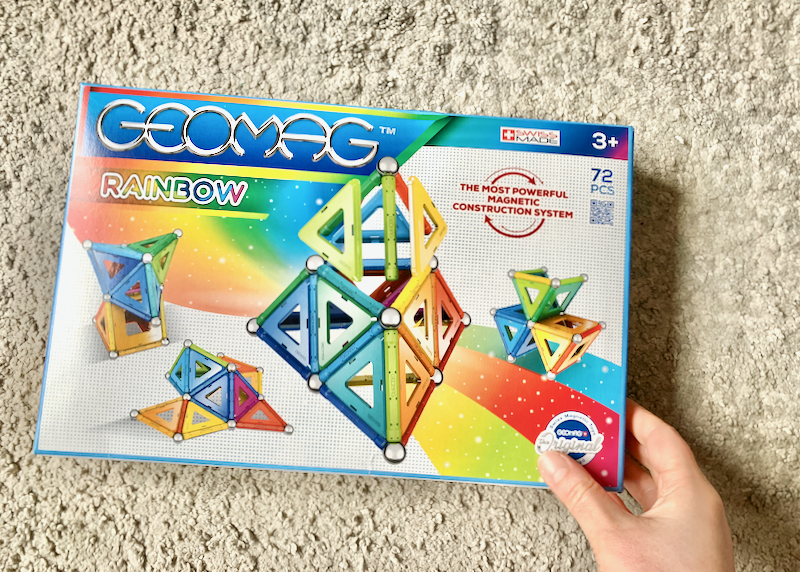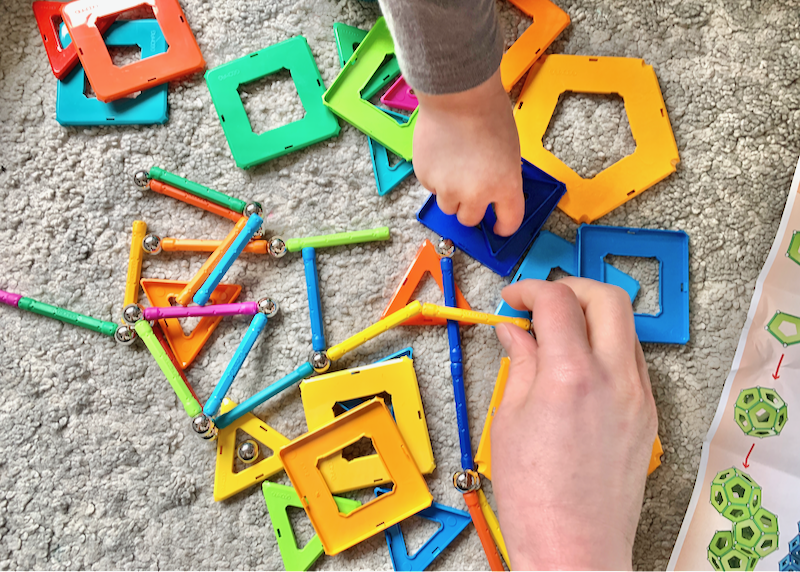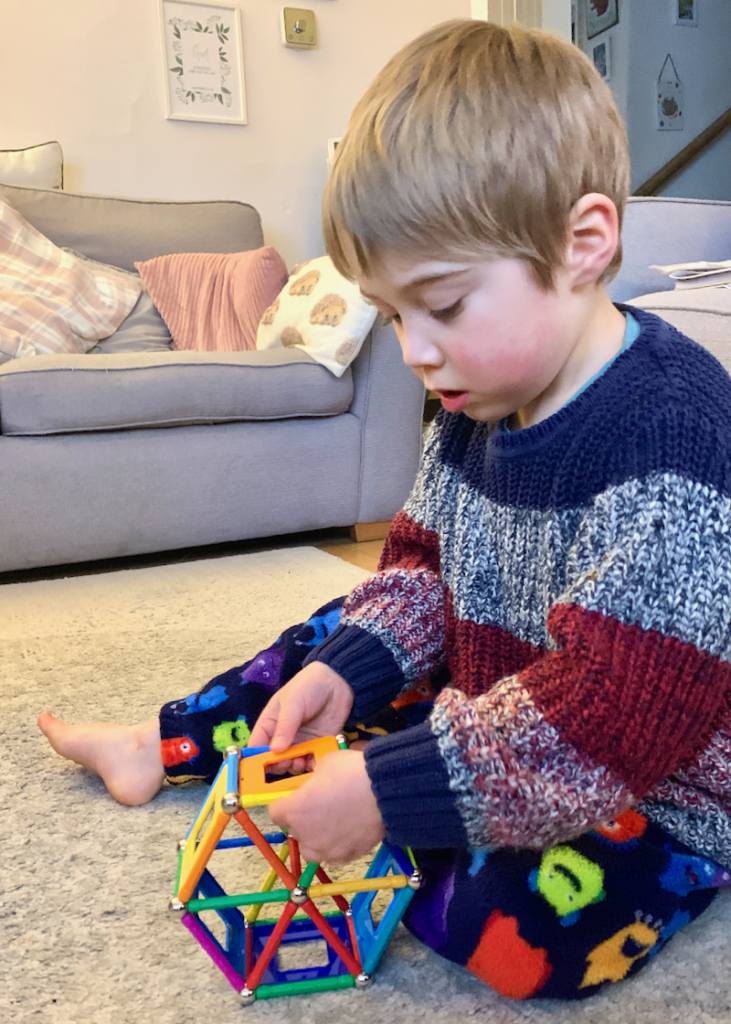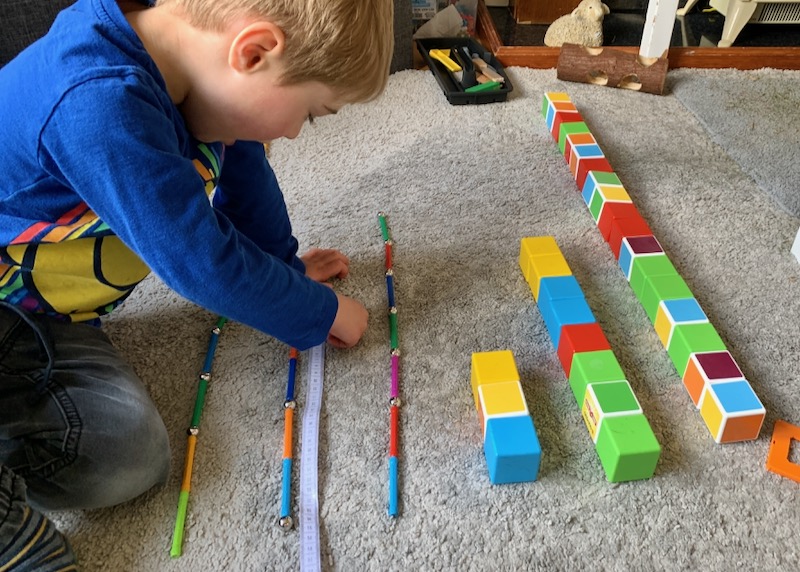Toy Review | Building with Geomag ‘Rainbow’ Classic Magnetic System
AD. This post contains gifted product from GEOMAG. All wording, images & opinion are my own.

This September our little man officially starts school, graduating from nursery to join reception – and I’m fully torn between excitement for him and heartache over the realisation that my baby is almost a school boy. How time flies when you’re having fun, eh?
Despite Reuben going to nursery three days a week, it’s still only morning sessions so the new school routine will be a culture shock for all of us. Fully aware that the long school day will soon fill most of our week, we’re clutching onto the time we have by going out plenty. Even when we’re not outdoors, home activities such as science experiments and baking on top of good old toy play help to keep the four year old entertained.
So when we received the wonderful Geomag Classic Rainbow system to review, it provided another reason to learn through play, which of course is the way early years kids learn best.

Geomag’s magnetic sets have been loved and played with for over twenty years, proving educational toys based on the STEM principles have a unique timeless appeal. Well, who can deny the satisfaction of a good build? Our Reuben has a keen interest in practical ‘thinking’ toys so he was more than happy to have a play with the Geomag set.
The 72 piece Rainbow set comes in a substantially sized box containing a colourful mix of classic Geomag elements: 24 magnetic rods, 24 steel balls and 24 plastic panels in geometrical shapes (triangles, squares and two large pentagons.) So there’s a decent range to play with.
In a nutshell, Geomag simply works like this: rods connect to balls to create structures; panels provide extra stability.
Knowing where to start with these kinds of toys can sometimes put kids off from ‘giving it a go’ but the joy of Geomag is found in the exploration. If you want to construct satisfying builds from the get-go, the enclosed leaflet starts you off with some good examples to try from the humble cube to the icosahedron. (Who even knew the name of that one?)


Discovering what works and what doesn’t is part of the journey – as much as the journey of frustration over failure. Through Geomag play, learners discover engineering, the forces of magnetic fields and polarity and ultimately how science dictates whether your structure is sound. Hell hath no fury like a four year old’s grievance!
Thankfully Geomag pieces are robust and have thus far withstood the test of tenacious fingers – just be careful with the metal spheres; basically mini shiny canon balls that could go either way, down a child’s gullet or through the tv. If you fancied hiding the balls away til little hands can be trusted, the magnetic rods, though limited without the balls to act as joints, do still work alone.
The plastic panels on the other hand could possible snap if you stood on one. So don’t do that.


PLAY TIME
These Geomags are great fun to play with. Thanks in part to their eye catching colours, the rainbow Geomags are a brilliantly engaging activity for team playing with your child or when they want to entertain themselves. Just keep an eye on them with the set as the parts are small and magnets are dangerous things if they’re swallowed.
While Geomags are great to sit and fiddle with, they can be a tad infuriating too. I find the rods tricky to stand straight or stay put and this can bring out the Mr Hyde in the little one. If you can build delicately fingered then you’ve more chance of your structure behaving as it should. I don’t particularly rate the plastic panels though. They’re meant to snap into place so the rod and ball structure has better stability but it’s not as satisfying as it ought to be. Instead, the panels just sort of sit within the rods and balls in a fragile fashion, and if you knock them they fall in (or out of place) a little too easily.
We’ve found you can have endless fun with the Geomag system, beyond the shape building. Geomags are also great for number or letter forming, measuring Geomag ‘snakes’ (a fab idea by Reuben) and even having a game of ‘Boxes’. You may have noticed Reuben’s Geomag Magicubes come in useful for these activities too!


So if your child loves playing with wooden blocks or plastic bricks, try moving onto Geomag magnetic sets like this one. There’s dozens of different sets in the Geomag range that work together so you can build bigger, nurturing those all important fine motor skills while teaching your child the joy of creation.

Leave a Reply